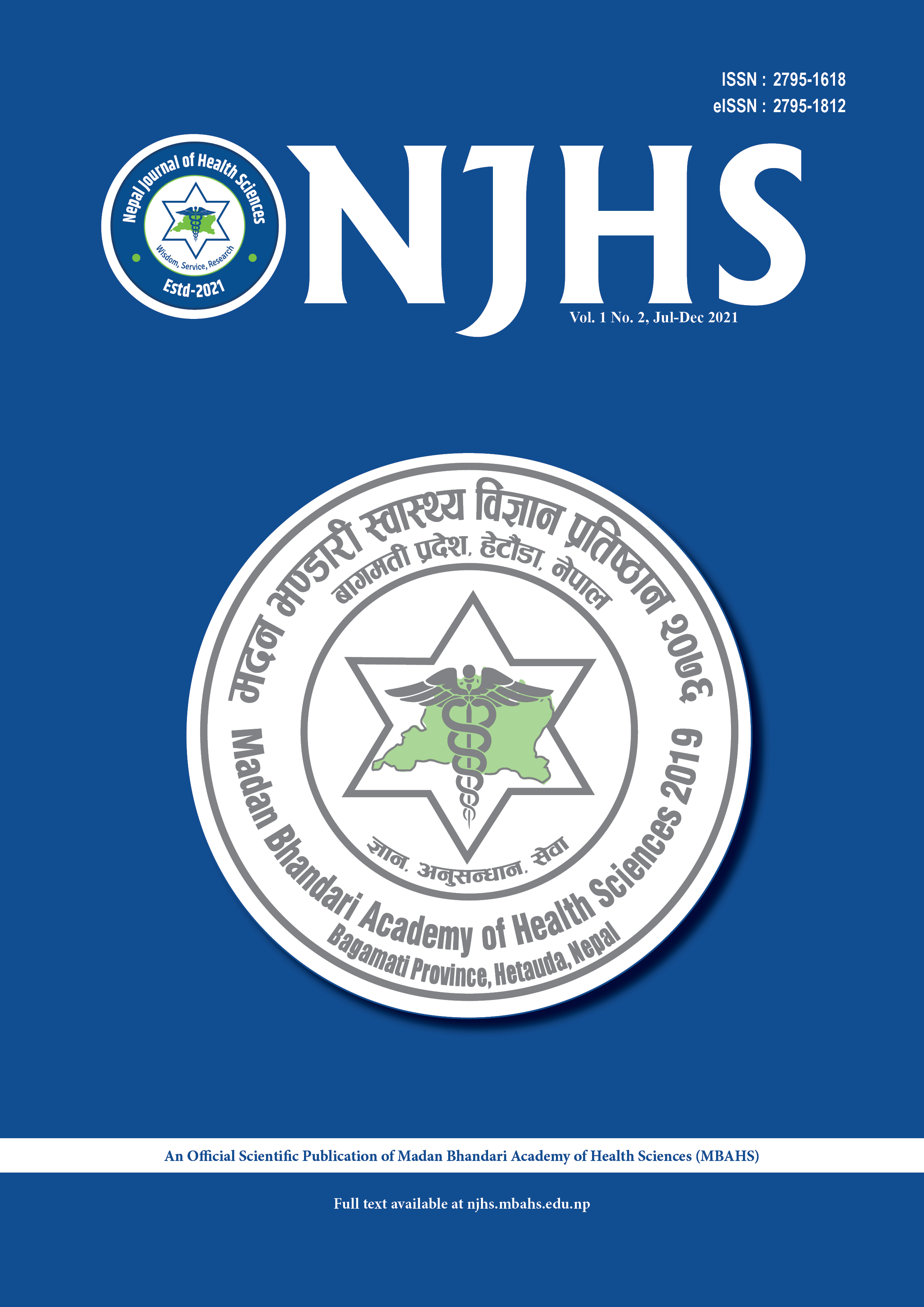Detection of Extended Spectrum β-Lactamases (ESBL) Producing Bacteria in Sepsis Suspected Neonates
DOI:
https://doi.org/10.3126/njhs.v1i2.42370Keywords:
Extended spectrum β-Lactamases; neonates; neonate intensive care unit; special care baby unit; sepsis.Abstract
Introduction: Neonatal sepsis is a clinical syndrome that is caused when the bloodstream of an infant is invaded by bacteria in the first month after birth.
Objective: The objective of the study was to identify bacteria involved in the infection and to determine “extended-spectrum beta-lactamase” (ESBL) producing bacteria from blood samples of sepsis suspected neonates in the Neonatal Intensive Care Unit and Special Care Baby Unit.
Methods: This cross-sectional study was conducted from January to July 2019 at Microbiology laboratory of Paropakar Maternity and Women’s Hospital. A total of 380 venous blood specimens were included in the study. The blood culture was performed and organisms were identified with standard microbiological methods. The Antibiotic susceptibility test was performed using the modified Kirby Bauer disk diffusion method. Screening of the organisms was done using cefotaxime and ceftazidime antibiotic disc and confirmation of ESBL was done by combined disk test. The data were considered statistically significant if the p-value was < 0.05.
Results: Out of a total of 380 blood specimens, the prevalence of neonatal sepsis was found to be 21.05% among which 57.5% were EOS type and 42.5% were LOS type. In EOS, E. coli (72.73%) was the predominant isolate while CoNS (100%) was the predominant isolate in LOS. Of the total 80 isolates, 65% isolates were found multidrug-resistant (MDR) whereas 58.75% of isolates were found to be ESBL producers.
Conclusions: This study concludes that routine bacterial surveillance and study of their resistance patterns is an essential component of the neonatal care unit.
Keywords: Extended-spectrum β-Lactamases; neonates; neonate intensive care unit; special care baby unit; sepsis.
Downloads

Downloads
Published
How to Cite
Issue
Section
License
Copyright (c) 2021 Sabita Nepal, Sushma Koirala, Subash Thakur, Susmita Bhattarai, Suraj Dhungana, Sharad Giri, Santosh Khanal

This work is licensed under a Creative Commons Attribution 4.0 International License.



